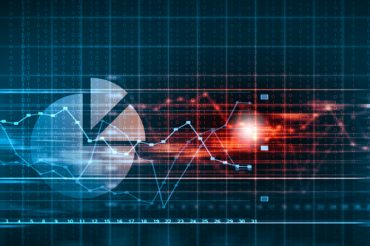
Predictive marketing, a huge business opportunity, takes advantage of Big Data, machine-learning techniques, and analytics to make sales. TIBCO’s chief data scientist walks through a use case of how it works with propensity analysis for a retailer.
It’s always been hard to know what customers want.
Traditional marketing attempted to solve the problem by offering numerous products at different price points, conducting focus groups and surveys to learn customer wants and desires, and refining products and messaging based on sales and survey data. In-store promotions, displays, and salesperson interactions could also encourage sales.
Now with shopping moving online—Amazon is now the nation’s largest retailer—a combination of Big Data and analytics is leading businesses to seek the holy grail of sales: predictive marketing.
The business opportunity for predictive analytics is enormous both for software providers and for companies. A report from Transparency Market Research has forecast that the overall market for predictive analytics will reach $6.5 billion by 2019.
For some large retailers, predictive marketing is already a core business function. Mintigo notes that Amazon’s recommendation engine powers 35 percent of its revenues. At Netflix, 75 percent of users select movies based on recommendations. (Also of note: The Emmy award-winning Netflix series “House of Cards” was influenced by data showing the popularity of director David Fincher, actor Kevin Spacey, and the British series of the same name).
Some other use cases involving predictive marketing include:
- At Nordstrom, an eight-person Data Lab team sought to derive customer insight from 1.2 billion product views per year and 200 million transactions. Big Data sources included inventory, product meta data, email campaigns, click streams, and purchase data. Customers were scored for their interaction with product segments, such as viewing, adding to basket, and purchasing, and an “affinity” score was calculated. Nordstrom used the data to develop an “inferred scoring” system that increased email-to-dollar conversion by 25 percent. They also developed a model that would predict repeat customers with an overall accuracy of 76 percent.
- Kraft used records from more than 100 million online visitors, including search records on its website as well as social observations, and 800 customer segments. It combined those insights for creative recipe content and noticed an increase in sales, click-through rates, and interaction rates.
TIBCO’s Spotfire for Predictive Marketing
A recent TIBCO webinar gave a peek inside its commercial Spotfire system, which has a palette of visualizations for data discovery, dashboards, analytics, and reporting.
“These are point-click and do not require any coding whatsoever,” said Michael O’Connell, chief data scientist for TIBCO.
Spotfire also supports predictive models from other applications, and allows companies to develop new models from scratch using R, S+, or TIBCO Enterprise Runtime for R (TERR). According to TIBCO, the TERR engine, a key component of Spotfire, is 10 times to 100 times faster than open-source R when applied to large datasets. (We’ve previously written about TIBCO’s re-implementation of R through TERR here.)
TERR can be embedded in TIBCO Business Events for complex-event processing, such as customer scoring in real time.
“It’s about presenting the right amount of information to the right person in the right context and that’s ultimately what our vision is,” said Mike Boyarski, TIBCO’s senior director of product marketing.
A Propensity Analysis Formula
O’Connell walked through a use case with Spotfire involving predictive analytics with machine learning for an online retailer. The goal is to get a customer to respond to a specific offer to buy a product.
The first step is to build a propensity analysis model for each customer based upon data that can be captured and relates to the customer, including the customer’s prior spending, prior spending in an adjacent category, time since last purchase, and so on.
“Now that you have that model, you can run it every time a customer makes a transaction,” O’Connell said.
Businesses can “make the offer in a couple different formats and then test and learn which form is resulting in the most adoption of the offer,” he said. Once a winning product and format is found, a challenger can be introduced.
The software and the model can also be used for in-store sales using geospatial data. “You can see who lives within a certain driving time of the store and how you should promote different products in those stores,” O’Connell said. Or when a competitor opens or closes their doors, “you can have an immediate response to that.”
Analysts can also drive sales of different products based on demographic distribution, O’Connell said. For example, if there are a certain amount of babies in a certain area, “how many diapers should you be selling out of that store on a weekly basis?” Geographical insight, he said, is “very powerful” when combined with predictive analytics.
Want more? Check out our most-read content:
Research from Gartner: Real-Time Analytics with the Internet of Things
Goodbye Don Draper, Hello Big Data: An EMA Report on Modern Analytics
Becoming an ‘Always On’ Smart Business
Frontiers in Artificial Intelligence for the IoT: White Paper
Liked this article? Share it with your colleagues using the links below!





























